“Kinnaur produces over 3000 MW of power. We don’t want more hydropower projects,” says Chandar Negi, a young Kinnaura from Kanam village in Himachal Pradesh’s Kinnaur district. “Unless locals of an area want a project, we demand a complete freeze,” Negi adds, ironically seated at a café on NH-5, which doubles up as a canteen for the staff of Shongtong-Karcham hydropower project management, Patel Engineering. Even as slogans of the No-Means-No campaign against new hydropower development continued to echo across the Kinner Kailash hills, last March, Chief Minister Sukhvinder Singh Sukhu urged for the completion of the Shongtong hydropower project by July 2025. The campaign started two years ago against the Jangi Thopan hydroelectric project and soon spread to other parts of the district.
The 402 MW Shongtong-Karcham Project is a run-of-river hydel project being constructed on the Sutlej river in the tribal-dominated district of Kinnaur. The Himachal Pradesh Power Corporation Limited (HPPCL), a state utility company, owns the project. It was initiated over a decade ago with the support of the Himachal Pradesh Clean Energy Development Investment Program and the Asian Development Bank.
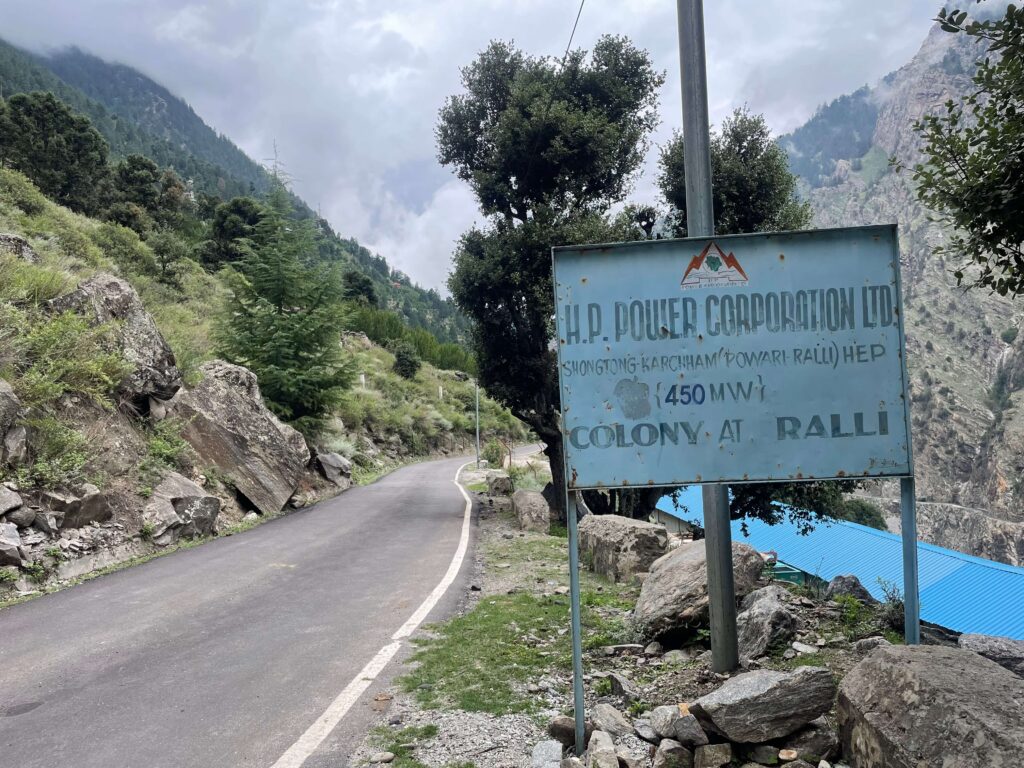
Yet to see most of the promises made to the impacted tribals on the basis of which they gave a No Objection Certificate (NoC) to the project, there is a growing sense amongst locals that they have been hoodwinked, with nobody to turn to. Despite facing delays and cost overruns, the project has benefitted from multiple amendments in India’s environmental appraisal law that extends the validity period of existing environmental clearances.
Now, residents of the impacted villages have joined the struggle to reject all future hydropower projects in Kinnaur district. The Shongtong Project is a telling tale of five villages’ disaffection due to unfulfilled terms of agreements with a hydel company.
Kinnaur: A Hotspot for Run-of-River Hydel Plants
Run-of-river projects channel river water through a tunnel that ends into a surge shaft, which releases the water at a regulated speed and pressure onto a turbine to spin it, thereby generating electricity. Of the 142 hydropower projects at various stages of development (commissioned, under construction, planned) in the Sutlej River basin, 53 fall in the hill district of Kinnaur. In fact, Himachal Pradesh relies on the Sutlej River to meet 40% (10,000 MW) of its total hydropower potential. Kinnaur’s projects alone are projected to contribute 3041 MW, which is about one-third of the entire basin’s potential. Himachal Pradesh aspires to become a ‘green state’ by 2026 by realising its hydel and renewable potential (the Centre gave the hydel projects renewable energy status in 2019). It was in this vein that the Chief Minister urged for fast completion of the Shongtong-Karcham project.
Mebar village, surrounding three hydel projects, namely Baspa II, Karcham Wangtoo, and Shongtong-Karcham, is located in Kalpa tehsil of Kinnaur at about 10,000 feet above Sutlej River. It is the longest glacier in Kinnaur district. In the winter, Mebar is covered in snow, but come summer, locals can be seen growing vegetables and maintaining fruit orchards here. As the winters set in, the residents descend 10 km from Mebar to Ralli, their winter village. At the same distance laterally from Mebar, sits Tangling village, the starting point of the religious Kinner Kailash trek and a designated muck dumping site for Shongtong. Powari and Khwangi villages sit the closest to the barrage site of the project.
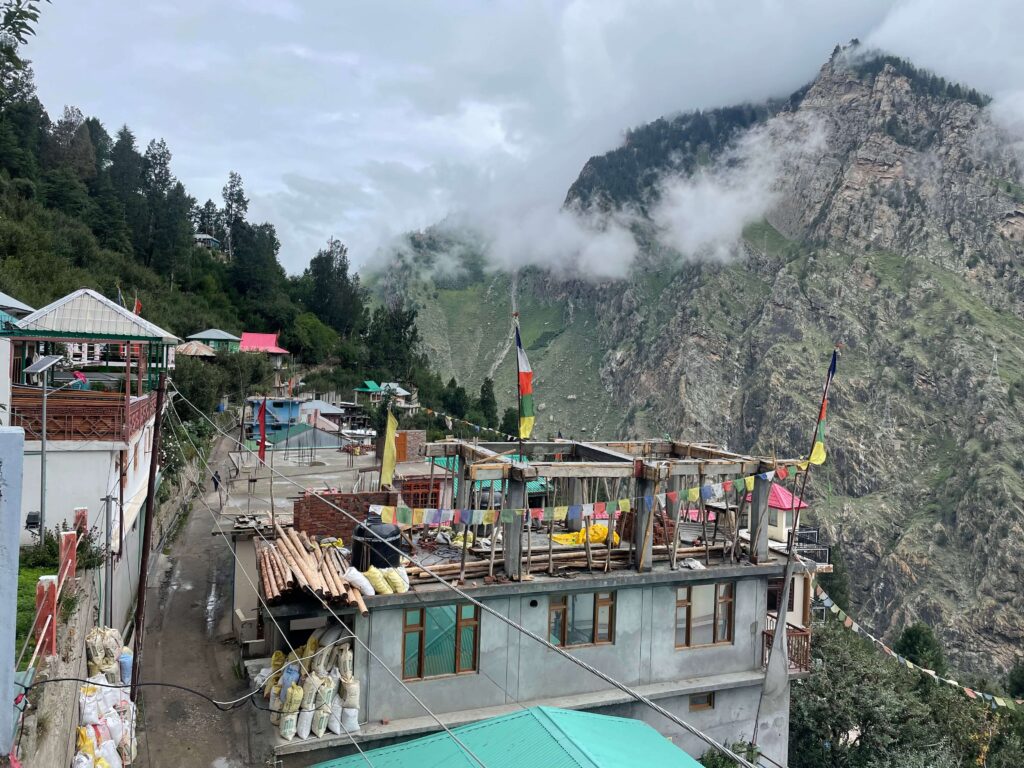
“People from HPPCL visited our village in 2008 seeking an NOC”, says Parmeshwar Negi, a retired government officer and a resident of Mebar village. The Indian constitution, through the Fifth Schedule, bestows areas with predominant tribal populations with special protections and rights. The fifth schedule areas, as they are commonly called, require any project or development activity to consult with the Gram Sabha (assembly of all adult members of a village).
“Initially we were against the project. The HPPCL officials met with us several times over the next four years. We asked them to tell us about the benefits and harms of the project. HPPCL wanted us to put our demands forward. We negotiated and eventually agreed,” recalls Lobzang Palmu, head of Mahila Mandal, a village-level women’s self-help group participating in development work of the village.
Palmu was the head of the village between 2010 and 2015. By 2011, Mebar Gram Panchayat had drafted an agreement listing its demands for employment, a ropeway between Mebar and Ralli and a share of electricity for the village. In April 2012, Mebar Gram Panchayat and HPPCL signed the agreement. Around the same time in 2011, the project received environmental clearance for constructing three units of 134 MW each in ten years. A public hearing for the project mandated under the Environmental Impact Assessment occurred on 28 and 29th July 2009.
| Chronology: Shongtong Kharcham Project | |
| 2008 | HPPCL approaches Kinnaur villages for NoC |
| July 2009 | Public hearing |
| 2011 | The project receives environmental clearance |
| 2012 | Agreement between Mebar Gram Panchayat and HPPCL |
| June 2014 | Landslide |
| October 2014 | Project seeks expansion, EAC asks to conduct public hearing |
| January 2016 | ToR granted for ropeway to Maheshwar Gram Vikas Committee |
| 2016 | The EAC reiterates the need for public hearing |
| 2020 | Covid period excluded from EC validity period |
| 2021 | Project seeks expansion and extension
Project would have expired, but gains from the above amendment |
| 2022 | Two years or time taken to obtain FC excluded from EC validity period
EC validity for hydropower projects increased from ten to 13 years Project would have expired, but gains from the above amendments; the validity will expire in November 2026 |
| November 2022 | The EAC makes a subcommittee to examine the violation for ex-post facto clearance for expansion |
| 2023 | Push for completing the project in time |
Wither the agreement?
The agreement with HPPCL has 14 conditions and not even 20% of those have been fulfilled, according to the locals. Take the case of a ropeway between Mebar and Ralli that was to be constructed by the HPPCL within 15 months from the date of signing the agreement and maintained by the Gram Panchayat. It is still pending.
Currently, the locals walk the distance between the two sites. For the movement of their harvest and supplies, a traditional pulley system is used that utilises the natural gradient of the terrain. A term of reference was issued by the environment ministry for the ropeway, but it never took off. This remains a major point of discontent for the locals, who saw the ropeway not just as a convenient mode of local transport but also as a way for the panchayat to earn from tourism. What has made matters worse is that the locals have heard that the ropeway will be constructed using the Local Area Development Fund. Concurrently, forest clearance under Sections 3(1) and 3(2) for constructing the road between Mebar and Ralli has also been given. The work, however, has been slow.
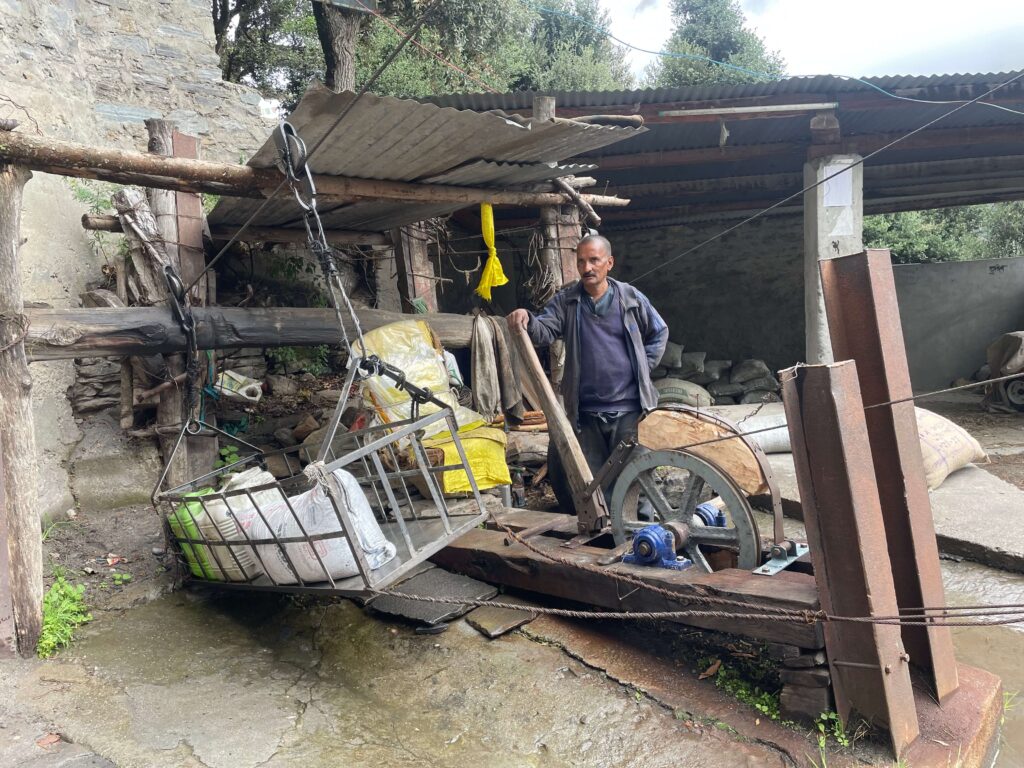
The Local Area Development Fund is a contribution of 1 to 1.5% of the project cost by a hydropower project proponent towards the development of the affected villages. The fund is managed by the Local Area Development Committee for all hydropower projects in the district. The committee is chaired by the Deputy Commissioner of the district with heads of all the impacted villages as members.
On June 21, 2014, about 100 meters upstream of the surge shaft of the Shongtong-Karcham Project and about 900 meters from its underground powerhouse site, agricultural land subsided. Locals alleged that tunnelling and blasting at the project construction site led to it — claims that were supported by the Local Area Development Committee. Besides, Clause 4 of their agreement with HPPCL stated that any damage caused by a calamity or accident that takes place during the time of the project construction and till two years after completion of construction work will be compensated by the HPPCL after due assessment of the damage. However, the geology department inspected the site between October and November 2014 and gave the project a clean chit. It inferred ‘excessive rainfall’ as the cause of the landslide. The villagers did not receive any compensation for the damage. To allay people’s fear of the further sliding of mud destroying the nearby houses and agricultural fields, HPPCL merely provided a retaining structure as reinforcement.
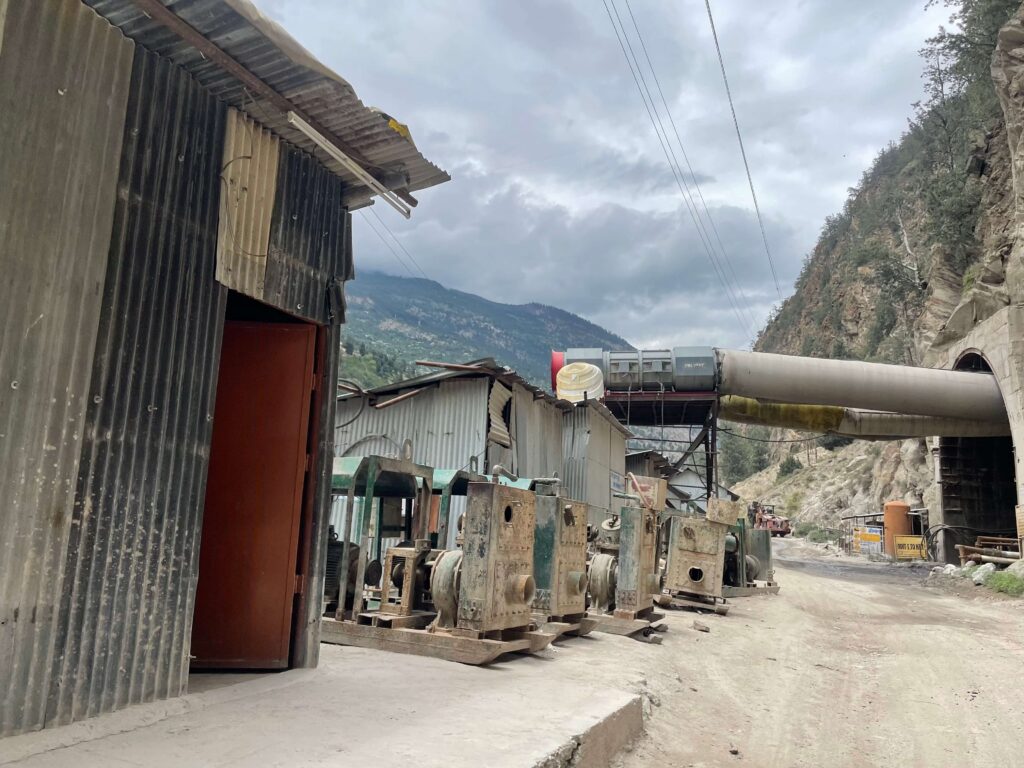
New landslides and road collapses have been regularly reported in the region since the start of the Shongtong project. In August 2018, a sudden surge in the flow of the Sutlej River after it came out of the diversion tunnel of the project led to a landslide and damaged several shops in the nearby market.
“We had demanded that during project construction and till five years after project construction, all calamities and disasters will be considered to be due to the construction activities. However, after negotiations with HPPCL we settled for two years,” says Parmeshwar Negi while complaining about how HPPCL went back on its word.
Ignored Commitments, Compromised Livelihoods
Residents of the villages surrounding the project were also promised an annual compensation for any damage to their crops and orchards due to construction dust. Dust compensation was to be calculated by the horticulture department and paid to the Gram Panchayat, which was supposed to distribute it among the villagers. However, residents of Mebar, Powari and Khwangi villages claim that the payments to the Gram Panchayat stopped four years ago.
“The village heads agreed on a compensation of three percent of the income from orchards. The income was estimated to be ₹64,000 per Bigha (752 sq m) for Kinnaur. This is lower than what the villagers received for Karcham Wangtoo. They got three percent of ₹93,000 in 2008. In 2015, it should have been higher for Kinnaur’s agricultural land,” Negi opines. Subedar Naginder, a retired army personnel and resident of Powari village who owns fruit orchards spread over four Biswa (37.6 sq m) estimates his losses to be much higher. According to him, each apple tree now produces four boxes of apples; earlier, they used to produce up to 20 such boxes.
Beyond compensations, the villagers are disgruntled about insufficient employment as well. They say this demand was raised during the public hearing for the Shongtong Project, to which records show a response that ‘employment to be given as per HPPCL R&R policy during construction’. The HPPCL Rehabilitation and Resettlement (R&R) policy promises one job to each family that has become landless due to the project. However, of the 129 families who lost land, no family became landless, according to the resettlement plan. Even those who received employment have gone on strike in the past demanding due payment of wages and facilities in accordance with labour laws.
The residents of villages that did not sign an agreement with the company were promised 500 days’ wages in lieu of forgoing their customary rights or usage of forest produce, according to Jiya Negi, a resident of Kalpa village and president of Van Adhikar Samiti (Forest Rights Committee) in Kinnaur. Kalpa’s residents did not sign an agreement with the company. Despite the compensation being prescribed in HPPCL’s R&R policy, “the payment was delayed,” adds Jiya Negi. “We have received the last instalment only now, after interference from our local MLA (Member of Legislative Assembly).”
Residents of Powari, however, have not received any such payment. “They signed their agreement in a hurry or some people became greedy and gave away the forest rights for a lump sum amount,” Negi regrets. In addition to customary permits to use forest land granted under state laws, the Forest Rights Act (FRA) recognises the rights of forest dwellers over their resources, on the basis of which communities and individuals can make claims. The FRA and the Office Memorandum of 2009, require for any forest diversion that a certificate is provided by the State Government that the rights of the locals over their forests have been ‘settled’ according to the FRA, in addition to consent from the concerned Gram Sabha for the proposed diversion of forest land. “While a certificate was given in 2011-12, claiming that rights under the FRA were ‘settled’ for diversion of forest land for the project, tribals in the region have started receiving forest rights only now”, he shared.
Ineffective Public Hearings
As the investigation into the causes of the landslide was ongoing, the project’s request to increase its capacity from 402 to 450 MW was being considered. In October 2014, the Expert Appraisal Committee of the environment ministry (which assesses the impacts of upcoming projects and recommends safeguards for those it approves) directed the project to conduct public hearings for expansion as soon as possible. That request lapsed as HPPCL never got around to conducting said public hearing. It placed another request in 2016 and the Committee responded with a similar direction as the last time, a request that was also never followed up on.
Currently, the Project’s request for expansion is pending with the MoEFCC, once again. However, locals maintain that the Shongtong Project has already been constructed for a 450 MW capacity. A query regarding this and unfulfilled conditions of agreements with villages was sent to Harikesh Meena, Managing Director of the HPPCL. It remains unanswered at the time of publication.
Paying heed to this, in November 2022, the expert panel formed a subcommittee to look into the alleged violation. The sub-committee’s observations are yet to be discussed by the Expert Committee. Even if the project is found to have been constructed without prior environmental clearance, it can apply for ex-post facto permission. A public hearing will be conducted for it. Locals hope to correct their mistakes. “Hum se galti ho gayi ki humne NoC diya, ab pachhta rahe hain. [We made a mistake by giving the NoC. We regret it now]”, said Palmu. “Ab project wapis hamare paas 450 ki jan sunvayi ke liye aaya toh hum permission nahi denge. [Now if the project comes to us for public hearing for 450 MW, we will not give the permission],” added Negi. But the public hearing cannot stop the expansion. It will only decide the fine, penalty, and conditions on which the environmental clearance is granted, post facto.
Aside from the environment ministry’s concession to projects operating without prior environmental clearance, Shongtong has benefited from the increased validity of environmental clearances too. The project was granted environmental clearance for a period of ten years, from 2011 to 2021. It was expected to complete its construction during this period. However, it has run into delays, and these delays have not led to any regulatory consequences.
In 2022, the validity of existing environment clearances to hydropower projects was extended from ten to thirteen years. Prior to this, one year of Covid lockdowns was excluded when calculating the validity period of all existing environmental clearances. The time taken to obtain forest clearance or two years, whichever is less, is also kept out from the validity period. Due to all these changes in the environmental clearance law, which were made without any public scrutiny, the Project now has time till November 2026 to complete its construction. However, its compliance with environmental clearance conditions, especially with regard to felling trees and muck-dumping has been poor. This project, however, is not alone. The Bastion has previously reported on the Asian Development Bank’s poor track record with environmental compliance.
Experts and lawyers we spoke to highlighted the lack of regulatory oversight to ensure compliance with the procedure for obtaining consent and post-consent conditions. “Conditional consent (as seen in this case) is a grey area,” says Arpitha Kodiveri, a postdoctoral researcher at NYU Law. “It isn’t a simple ‘Yes’ on the Gram Sabha’s part. Rather, it is a ‘Yes, but’. Unfortunately, there is no legal shield under the PESA or FRA in the event that conditions based on which the NoC was provided are violated”.
In the absence of any effective grievance redressal avenue under the PESA Act and corresponding state rules, the locals are left with the recourse of approaching courts for environmental violations or breach of contract under the Indian Contract Act. In 2020, another set of locals approached the High Court of Himachal Pradesh highlighting the environmental violations and obtained an injunction on felling of trees and dumping of construction debris into the river. However, locals from other villages which did not execute an agreement with the company view the agreement as a step up from the demand charters they prepared in other projects.
“An agreement with the board of directors of the company definitely is stronger than the demand charter we are used to giving to project developers. We couldn’t take companies to court based on a demand charter, but in this case Mebar Gram Panchayat can,” believes Jiya Negi. “We have said no to any future hydel projects. But if locals agree to a project, they should have an agreement with the company, perhaps with clauses that are not vague, in order to ensure that promises made by the company are met with funds in addition to the Local Area Development Fund.”
Will the opposition to the expansion dissipate like the last time? Or will the locals be able to use this opportunity to extract the pending dues from the HPPCL? The danger of empty assurances to locals looms large, and only time will tell. For now, those privy to the progress of the Shongtong-Karcham Project do not believe it will meet Sukhu’s timeline.
“The project got delayed due to local protests and strikes by employees,” said the official at Patel Engineering, who requested to remain anonymous. “The latest deadline for project completion is 2025. But it will not meet that deadline either.”
This story has been supported by the International Centre for Not-for-profit Law as part of a study on public participation in environmental decisions.
Featured image of one of the Shongtong-Karcham Project construction sites in Kinnaur by Meenakshi Kapoor


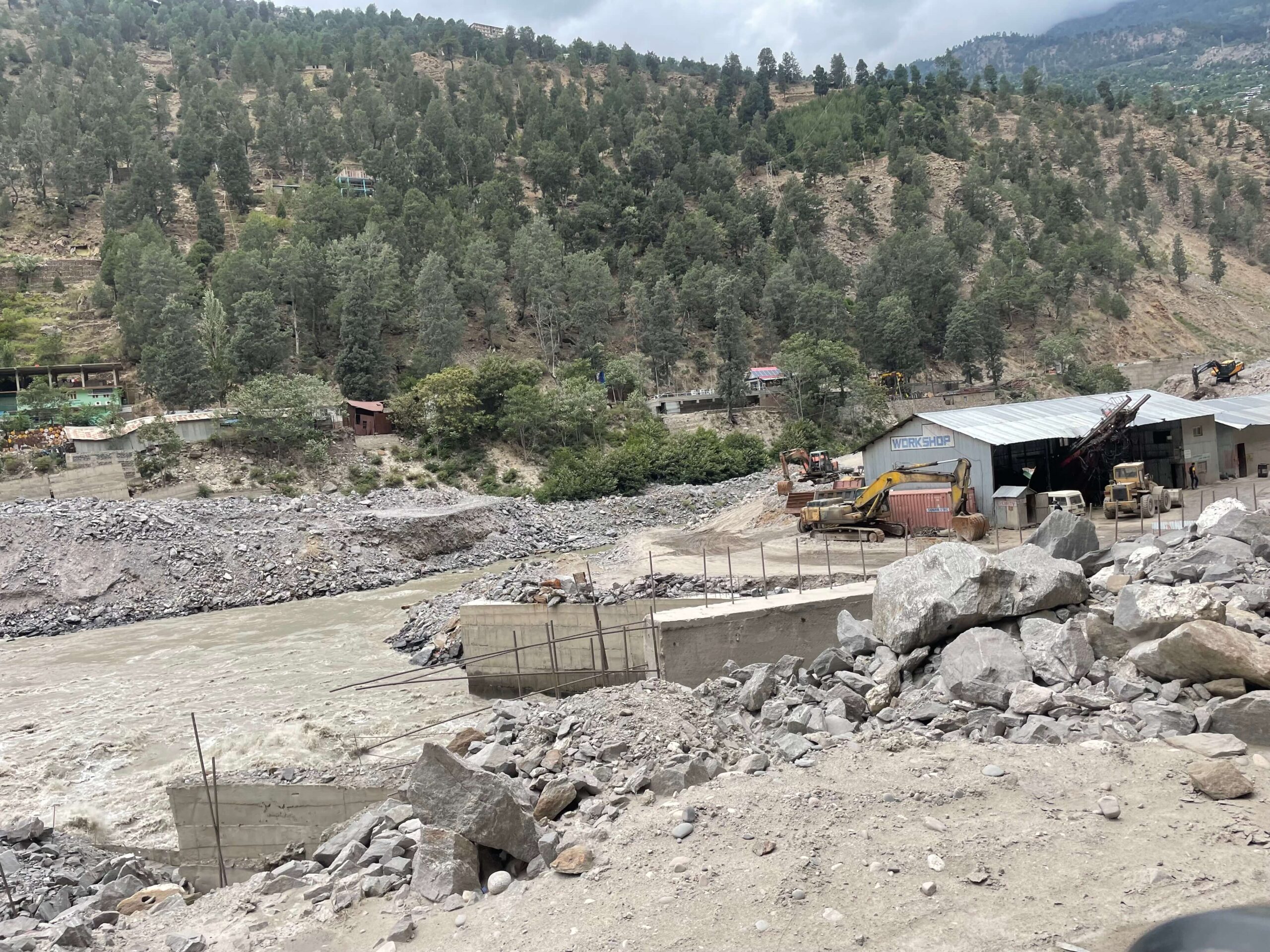




[…] Read the full story here […]
[…] Environmental participation report author Meenakshi Kapoor explores the impacts of disenfranchisement of local communities and tribal peoples of Kinnaur around the Shongtong Hydroelectric Project, as the government fast-tracks large project approvals and removes environmental protections in this article from The Bastion. […]